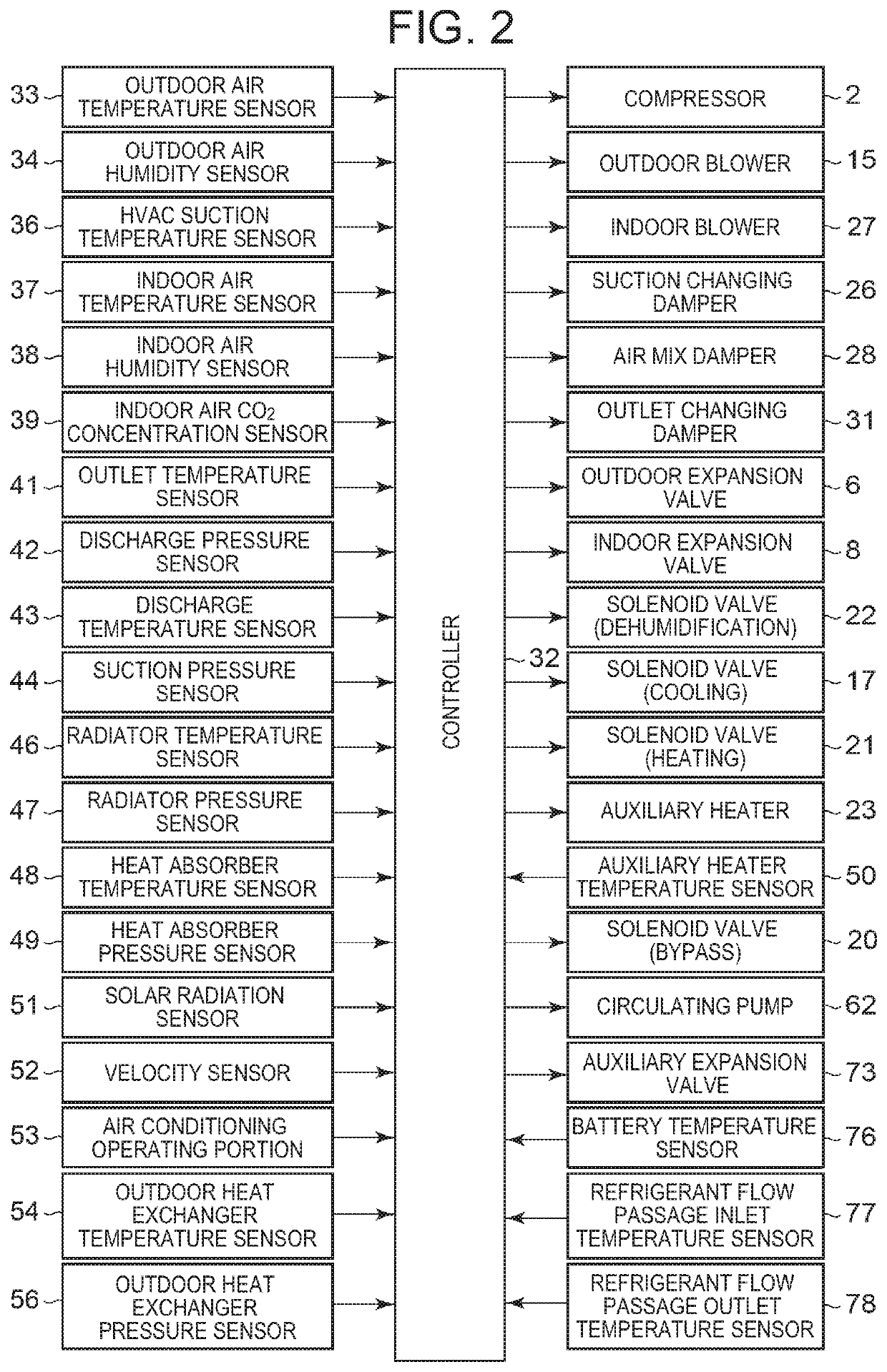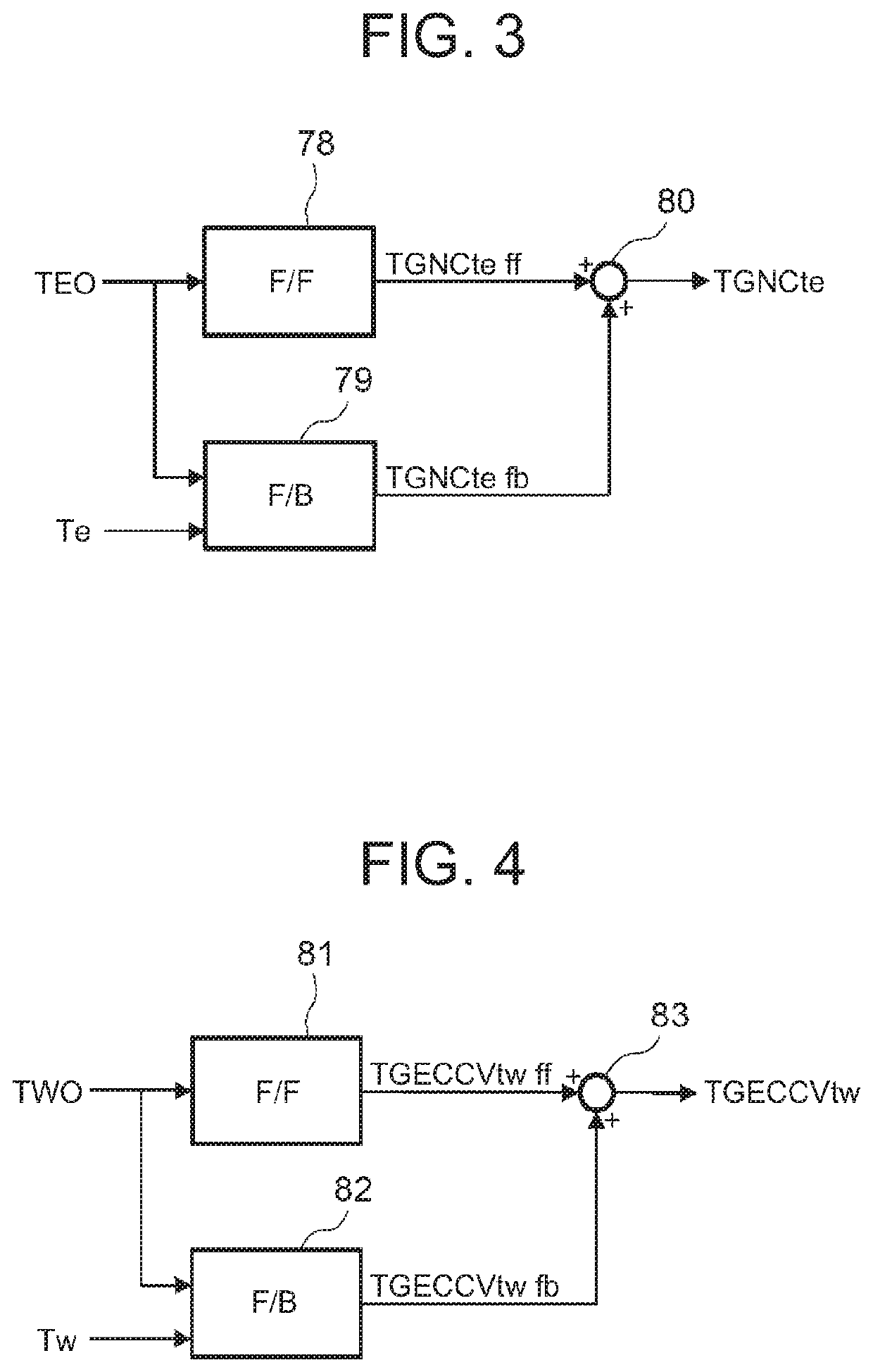Vehicular air conditioning device
a technology of air conditioning device and battery, which is applied in vehicle heating/cooling devices, vehicle components, transportation and packaging, etc., can solve the problems of high temperature of battery during charging, and achieve accurate and efficient adjustment of battery temperature, efficient cooling of battery, and efficient consumption of power.
- Summary
- Abstract
- Description
- Claims
- Application Information
AI Technical Summary
Benefits of technology
Problems solved by technology
Method used
Image
Examples
Embodiment Construction
[0036]Hereinafter, description will be made as to embodiments of the present invention in detail with reference to the drawings.
[0037]FIG. 1 illustrates a constitutional view of a vehicular air conditioning device 1 of an embodiment of the present invention. A vehicle of the embodiment to which the present invention is applied is an electric vehicle (EV) in which an engine (an internal combustion engine) is not mounted, and is provided with a battery 55 and runs with an electric motor for running (not shown in the drawing) which is driven by being supplied with power charged in the battery 55. The vehicular air conditioning device 1 of the present invention is also driven by the power of the battery 55.
[0038]That is, in the electric vehicle which is not capable of performing heating by engine waste heat, the vehicular air conditioning device 1 of the embodiment performs a heating mode by a heat pump operation in which a refrigerant circuit R is used. Further, the vehicular air condi...
PUM
 Login to View More
Login to View More Abstract
Description
Claims
Application Information
 Login to View More
Login to View More - R&D
- Intellectual Property
- Life Sciences
- Materials
- Tech Scout
- Unparalleled Data Quality
- Higher Quality Content
- 60% Fewer Hallucinations
Browse by: Latest US Patents, China's latest patents, Technical Efficacy Thesaurus, Application Domain, Technology Topic, Popular Technical Reports.
© 2025 PatSnap. All rights reserved.Legal|Privacy policy|Modern Slavery Act Transparency Statement|Sitemap|About US| Contact US: help@patsnap.com



